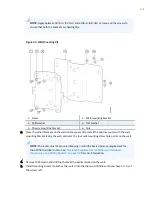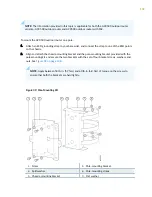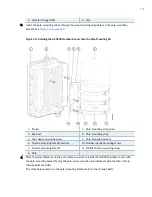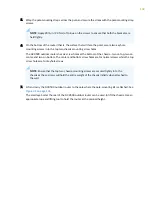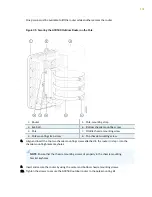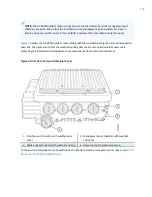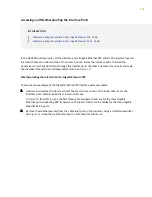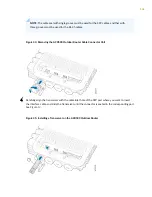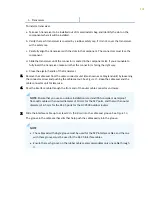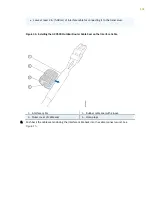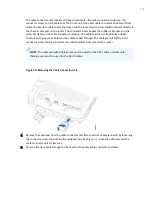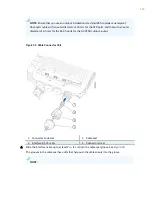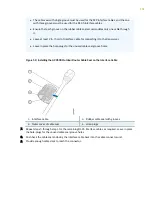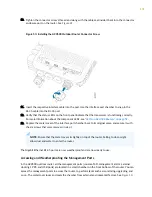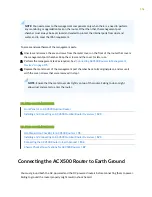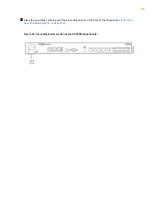
1
—
Transceiver
To install a transceiver:
a. Take each transceiver to be installed out of its electrostatic bag, and identify the slot on the
component where it will be installed.
b. Verify that each transceiver is covered by a rubber safety cap. If it is not, cover the transceiver
with a safety cap.
c. Carefully align the transceiver with the slots in the component. The connectors must face the
component.
d. Slide the transceiver until the connector is seated in the component slot. If you are unable to
fully insert the transceiver, make sure that the connector is facing the right way.
e. Close the ejector handle of the transceiver.
5.
Remove the cable seal from the cable connector unit (also known as cable gland unit) by loosening
the connector screw and pushing the cable seal out. See
Figure 15
. Keep the cable seal and the
cable connector unit for later use.
6.
Pass the interface cable through the front end of the outer cable connector enclosure.
NOTE: Ensure that you use an outdoor installation rated and IP65-compliant waterproof
fiber-optic cable with an outer diameter of 10 mm for the SFP ports, and that with an outer
diameter of 6.5 mm for the RJ-45 ports for the ACX500 outdoor routers.
7.
Slide the interface cable up to at least 2 in. (5.08 cm) into the cable seal groove. See
Figure 14
.
The groove in the cable seal has slits that help push the cables easily into the groove.
NOTE:
• The cable seal with single groove must be used for the SFP interface cables, and the one
with three grooves must be used for the RJ-45 interface cables.
• Ensure that each groove on the rubber cable seal accommodates only one cable through
it.
147


